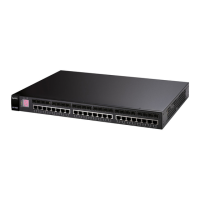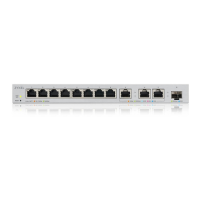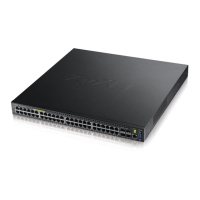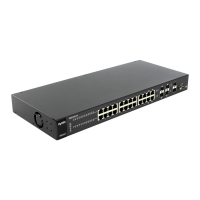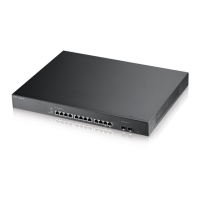Chapter 50 OSPF
XGS4600 Series User’s Guide
455
To configure an area, set the related fields in the IPv4 OSPF Configuration screen.
Figure 361 IP Application > OSPF > IPv4 OSPF > Configuration: Area Setup
The following table describes the related labels in this screen.
Table 209 IP Application > OSPF > IPv4 OSPF > Configuration: Area Setup
LABEL DESCRIPTION
Name Enter a descriptive name (up to 32 printable ASCII characters) for identification purposes.
Area ID Enter a 32-bit ID (that uses the format of an IP address in dotted decimal notation) that uniquely
identifies an area.
A value of 0.0.0.0 indicates that this is a backbone (also known as Area 0). You can create only
one backbone area on the Switch.
Authentication Select an authentication method (Simple or MD5) to activate authentication. Select None
(default) to disable authentication.
Usually interfaces and virtual interfaces should use the same authentication method as the
associated area. If interfaces and virtual interfaces use different authentication methods than
the associated area, the authentication methods are based on the interfaces and virtual
interfaces settings.
Stub / NSSA Select this option to set the area as a stub area or a not-so-stubby area.
If you enter 0.0.0.0 in the Area ID field, the settings in the stub area fields are ignored.
No Summary Select this option to set the Switch to not send or receive LSAs.
Default
route cost
Specify a cost (between 0 and 16777215) used to add a default route into a stub area for routes
which are external to an OSPF domain. If you do not set a route cost, no default route is added.
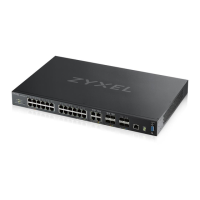
